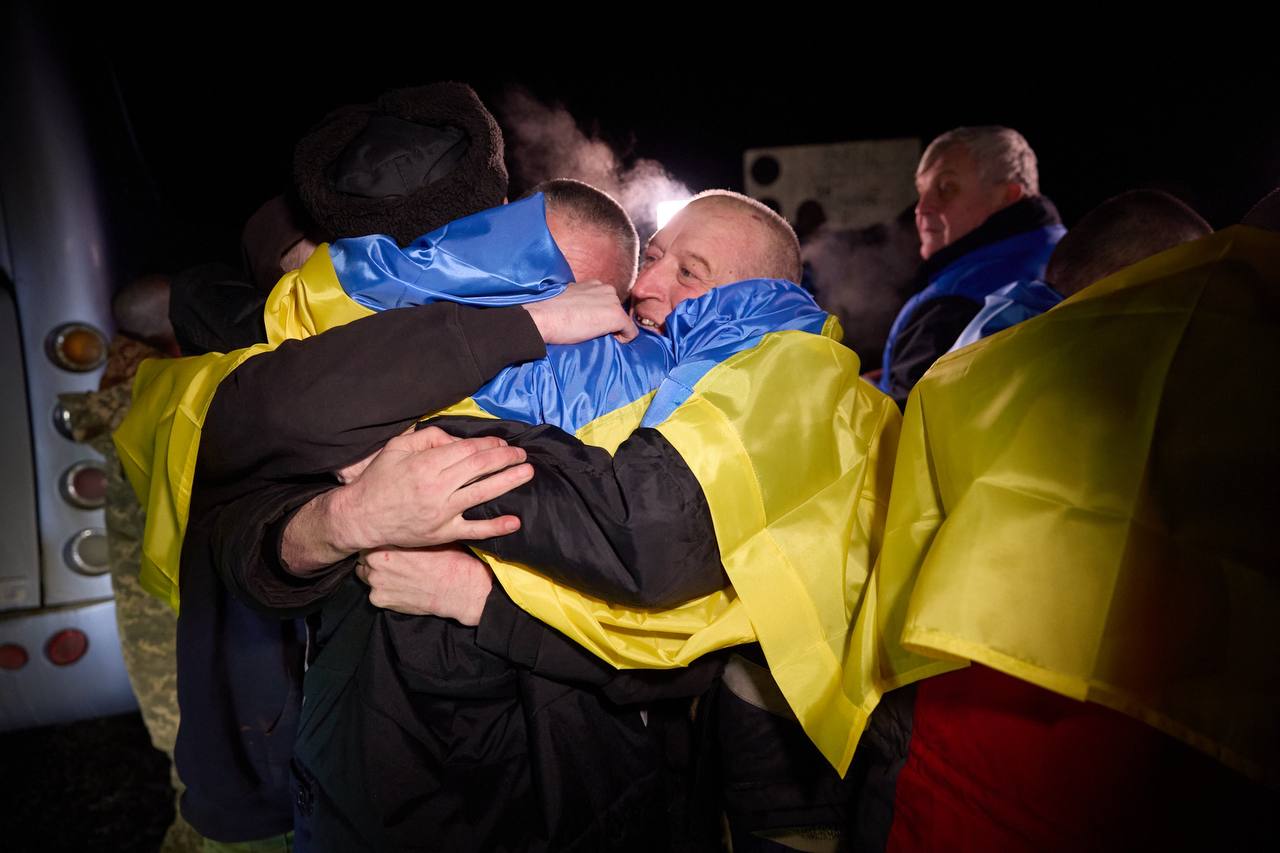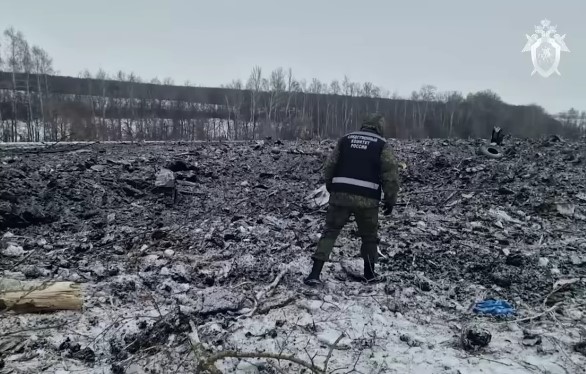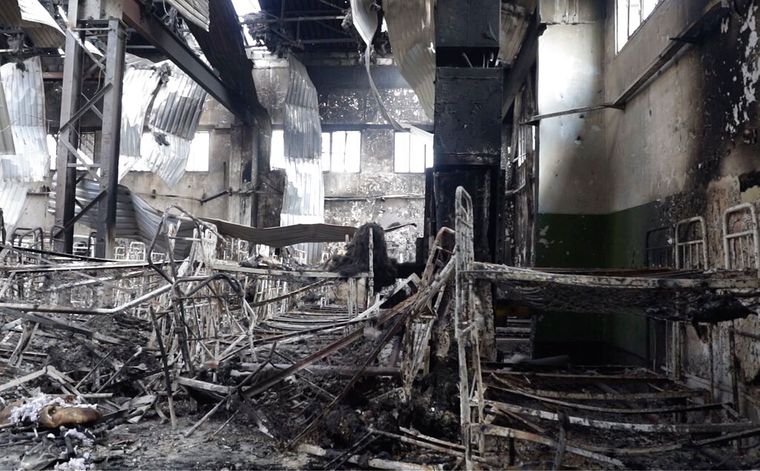
We cannot assert the presence of Ukrainian prisoners of war in the IL-76, however, they were included in the «leaked» exchange list —Katrichenko
In early 2024, the process of exchanging prisoners of war resumed, leading to the return of over 430 defenders to their homes. Nevertheless, the fate of 65 defenders, who were in the process of being prepared for exchange, remains unknown. The Russian Federation reported their «deaths» after the crash of an IL-76 aircraft in the Belgorod region on January 24.

What do we know about the details of the exchanges so far? We found out in the latest episode of the program «Free Our Relatives».
For your reference: The exchanges occurred twice in January. The 49th exchange of prisoners took place on January 3, marking the first exchange after a prolonged hiatus. Since the summer of 2023, the Russian Federation has been slowing down the process of returning Ukrainian prisoners. On January 3, the exchanges resumed, resulting in the return of over 200 people, including civilian hostages – an unusual occurrence in exchanges that typically involve mostly prisoners of war.
Another significant event transpired between these two exchanges. On the afternoon of January 24, an Il-76 military transport aircraft crashed in the Russian Belgorod region. The Russians immediately claimed that there were allegedly «Ukrainian prisoners of war» on board and accused Ukraine of shooting down the plane. However, there is still no confirmation of this, with no bodies, evidence, or photos from the crash site provided by the Russians. It’s crucial to note that the Coordination Headquarters, responsible for the exchange process with the Russian Federation, confirmed that another prisoner exchange was supposed to take place on January 24, but it did not occur. There were fears that the Russian Federation might resume delaying the process, but fortunately, this did not happen.
We discussed these January events with Tetyana Katrychenko, the coordinator of the Media Initiative for Human Rights.
«We were aware of the exchanges scheduled for January»
Tetyana Katrychenko: Speaking about exchanges in general, if you recall, during his final press conference, Volodymyr Zelenskyy mentioned that Ukraine had successfully negotiated the return of a significant number of servicemen to the territory controlled by Ukraine. Consequently, two exchanges have already occurred in January.
At the beginning of the month, it became evident that there would be several exchanges in January. This information was communicated by both the representatives involved in the exchange process and the relatives who sensed it. However, after the first exchange on January 3, where 230 of our citizens returned home, an unexpected event occurred on January 24 when the Il-76 plane crashed. We were aware the day before that an exchange was scheduled to take place. The latest exchanges occurred in the Sumy region, where our soldiers were brought. These exchanges were noticeable.

However, the exchange scheduled for the 24th did not take place due to the plane crash. According to Russia, the plane was carrying military personnel intended for exchange. In our effort to analyze the situation, we sought to understand the possibility of Ukrainian servicemen being on that IL-76. Previous interviews had revealed that Ukrainian servicemen were transported both in stages, moving from colony to colony within the Russian Federation, and for exchanges via IL-76 aircraft. Military personnel, who had experience in airborne troops or similar services, confirmed this.
Initially, during the full-scale invasion, prisoners were transported to Crimea using such aircraft. Subsequently, exchanges occurred from Crimea through the Zaporizhzhia region to the territory controlled by Ukrainian authorities, with the latest exchanges taking place in the Sumy region. These Il-76 aircraft functioned more like buses, stopping and landing in specific settlements to pick up additional prisoners before reaching the final exchange point.
Could prisoners of war have been on that particular plane? Yes, it was possible, as even for short distances, the Russians utilized these Il-76s.
However, doubts arose immediately. The number of prisoners, 65, seemed small compared to previous exchanges, which were more extensive. Additionally, the Russian claim of only three observers on the plane raised confusion. Based on our knowledge, such exchanges typically involved more than three supervisors to monitor the prisoners, who were usually seated with tied hands in a herringbone formation.
Examining testimonies, especially those from individuals held in the Luhansk SIZO in the Luhansk region, revealed instances where prisoners were transported by plane to the Belgorod region for exchanges—a distance of about 400 km from Luhansk to Belgorod.
The Russian assertion of only three observers seemed implausible based on known practices. Typically, a larger escort, around twenty individuals, would be present for the transportation of 65 prisoners. As we observed images and information about identified bodies, it became evident that the situation did not resemble the scenes witnessed in the downing of MH17, where remains were scattered over a wide area. The aftermath of the IL-76 crash in Luhansk airport in 2014 also exhibited a different pattern of scattered remains.

Is it possible to draw a parallel between the crash of the IL-76 and the terrorist attack in Olenivka?
Tetyana Katrychenko: In reality, there is no evidence suggesting the presence of Ukrainian prisoners of war on the IL-76, or if there is, we are not aware of it.
Referring to the explosion in Olenivka, it’s important to note that the incident occurred in the occupied territory. The following day, within the colony and barracks, there were journalists present, including Russian journalists and those from the Reuters agency. It was the Reuters photographer who captured and disseminated images of the explosion globally. A photojournalist from this agency operates in the occupied part of the Donetsk region, and there could be more than one such photographer in the Russian Federation cooperating with Reuters. If the circumstances align with our earlier discussion, it is plausible that the agency’s photographer could have been in the area deeply involved in the event. However, there are no photographs depicting the remains of bodies to the extent that they should have been there. In the case of Olenivka, we saw images of all the burnt bodies the day after the incident, and similar documentation should have been available in this case as well. The absence of such pictures raises questions about whether there is a deliberate decision not to share such graphic images.

When the plane exploded, it didn’t fall in an area fenced off by some kind of barrier where access is restricted. It seems plausible that someone had to reach the crash site.
What do the explosion in Olenivka and the downing of the IL-76 have in common? The shared element is Russia’s claim that Ukrainian servicemen and prisoners of war were killed in both incidents. This is the sole similarity; everything else differs significantly.
In Olenivka, the explosion and the death of Ukrainian prisoners of war were clearly established through photos, videos, and testimonies, even on anonymous Telegram channels. Visual evidence, including a photo displaying several remains of bodies, substantiated the incident. However, in the case of the IL-76 crash, the available photo raises uncertainty about the identities of the bodies.
The exchange that occurred on January 31 is not the same exchange initially planned for the day the IL-76 went down
Tetyana Katrychenko: Challenges and inaccuracies often arise with the lists and names on exchange lists. Present-day exchanges differ from those in 2019 or 2017 when each person could be identified because all individuals received were known. Currently, the Ukrainian side, and even competent authorities, may not be aware of all individuals held in Russian captivity, as some are considered missing.
In January, several fake lists circulated on Telegram channels. Before the January 3 exchange, a propagandist’s channel posted a list of about 300 people, and after the exchange, most returned home (230 people). However, individuals from that list who did not return were later mentioned by the Russian side in connection with the plane crash.
The significance of this is unclear, but it is evident that someone identified these several hundred names out of the approximately 10,000 prisoners of war.
During the December 31 exchange, some names from the list of 300 prisoners of war reappeared. However, none of the individuals listed as allegedly killed in the plane crash were part of this new exchange. Their fate remains unknown.
Soldiers exchanged on March 3 reported seeing some individuals from the alleged list alive in their cells, confirming that at least some were still alive. We believe they were all alive.
Return of civilians in recent exchanges: has this issue moved forward?
Tetyana Katrychenko: Clearly, the return of civilians to government-controlled territory is not the widespread process anticipated by families. It appears to be more of an exception in the overall exchange process.
Notably, there is a lack of commentary in the information field, and journalists face challenges in reaching and identifying the civilians returned in the exchange on January 3.
Discussing this topic is complex at the moment, as families are eager to keep certain information private. There are questions about some individuals labeled as civilians, as they may not fit the classical definition. While Ukraine considers them civilians, the Russian Federation may not, given their collaboration with defense forces.
In essence, there were no civilians in the conventional sense of the term involved in the exchange. The process of exchanging civilian prisoners, as we commonly discuss it, has not been unblocked.
Who are these so called civilians who are now subject to exchange?
Tetyana Katrychenko: It’s crucial to recognize that Ukrainians in all regions temporarily occupied by the Russian Federation resisted Russian aggression in various ways. Some participated in rallies, others contacted friends in the defense forces, and some joined the defense forces without formal contracts. The distinction between those casually on the street or making a phone call and those intending to join the defense forces but not formalizing it is subtle.
We lack comprehensive information on who did or did not contact whom. What we can affirm is that Ukrainians resisted in multiple ways, either actively opposing or staying in their places to maintain local infrastructure and community government activities. However, individuals who did not sign a formal contract or take up arms may be considered civilians. Ukraine classifies such persons as civilians, while the Russian state might categorize them as combatants, often accusing them of «sabotage», «subversion», or «terrorist» activities.
As a reminder, on January 24, an Il-76 military aircraft crashed in the Belgorod region of the Russian Federation, with some sources suggesting it carried missiles for the S-300 air defense system.
Following the incident, Russian media outlets disseminated statements by the head of the Russian State Duma Defence Committee, Andrei Kartapolov, claiming the plane had dozens of Ukrainian prisoners of war destined for exchange on board. Ukrainian Ombudsman Dmytro Lubinets and the Coordination Headquarters stated they were investigating the situation.
The General Staff of the Ukrainian Armed Forces, a few hours after the crash, hinted that the aircraft was a military target carrying ammunition for the Russian army. The Defence Intelligence of Ukraine clarified that the scheduled exchange for January 24 did not occur but lacked information on whether Ukrainian prisoners were on board.
President Volodymyr Zelenskyy canceled planned regional trips until the circumstances of the Russian IL-76 crash in the Belgorod region are clarified.
In times of war, the program «Free our relatives» tells the stories of people, cities, villages, and entire regions that have been captured by Russian invaders. We discuss the war crimes committed by the Kremlin and its troops against the Ukrainian people.
The program is hosted by Igor Kotelianets and Anastasia Bagalika.
The coverage of war crimes resulting from Russia’s war against Ukraine is made possible by the support of the American people through the United States Agency for International Development (USAID) in the framework of the Human Rights in Action Program implemented by Ukrainian Helsinki Human Rights Union.
Opinions, conclusions and recommendations presented in this publication do not necessarily reflect the views of USAID, the United States Government. The contents are the responsibility of the authors.


